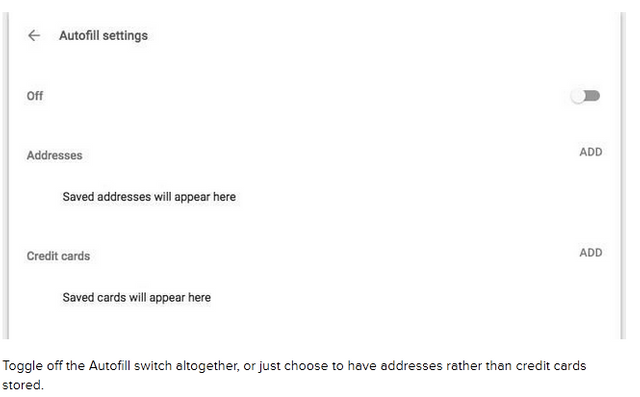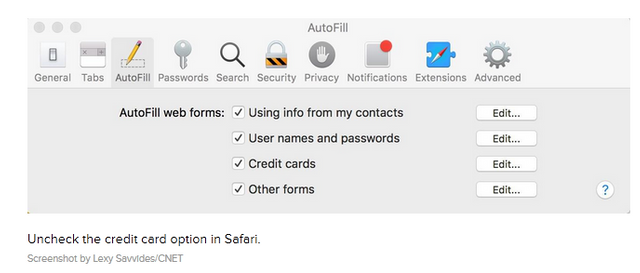How to protect your credit card online
Keep your credit card details away from prying eyes and avoid fraudulent transactions with these tips for shopping online
It pays to protect yourself when shopping online to avoid getting more than you bargained for.
With high-profile data breaches potentially affecting millions of people, here are some card-specific tips to keep in mind when virtually swiping your plastic.
The basics
Use a credit card. Debit cards often don't have the same level of fraud prevention and protection
Only enter details on secure sites. Look for an https connection and valid security certificates
Don't send credit card details over email or social media
Keep your antivirus software and browsers up to date
Avoid clicking through on deal links from emails as it may be a phishing attempt
Read more tips for shopping online safely
Turn on your credit card's added layer of security
Many credit cards will have an additional layer of security that might not be enabled by default. MasterCard's SecureCode is a one-time code you enter every time you make a transaction on a supported site.
Verified by Visa also requires a passcode to authorize a purchase. On top of these safeguards, some banks also have their own verification system in place that works in place of SecureCode and Verified by Visa. This may include the bank sending a one-time PIN or security code to your phone as a second layer of authorization. Check with your bank or financial institution to see if one of these options is available.
Both Mastercard and Visa offer Zero Liability protection against fraudulent transactions for both online and offline use.
Consider a separate card for online transactions
For those who want to keep online purchases completely separate from everyday credit card transactions, prepaid cards are one option.
They allow you to load a set amount of money at the time of purchase. The advantages are plentiful when it comes to using a prepaid card for online shopping, but the big one is that even if the card's details are compromised somewhere along the chain, there is a limit to the amount of money that can be taken.
Virtual credit cards
Some banks and financial institutions let you generate a virtual credit card number. This is a single-use number linked to your real card that often has a fixed spending limit and an expiry date. Even if a merchant is compromised and your details are exposed, thieves only get this temporary number. Bank of America calls this ShopSafe and Citi's version is Virtual Account Numbers.
A third-party option is Privacy, a browser extension for Chrome that links to your bank account. Click the icon in the Chrome toolbar to generate a virtual card on demand and load it with an amount of your choosing. You can create burner cards so numbers self-destruct after use. Privacy is currently only available in the US.
A payment system such as PayPal, Mastercard Masterpass, Visa Checkout, Amazon Pay or Apple Pay can add an extra layer of protection between you and the merchant. Your payment details aren't revealed to the store when you use one of these services.
Watch statements for any unusual transactions
While many banks have sophisticated 24/7 monitoring systems designed to detect fraud and unauthorised credit card use, it's important to keep an eye on your financial statements. If you spot anything suspicious, call your bank immediately.
Hamid Karimi from Beyond Security also suggests letting your bank know where you do your online shopping and to block certain geographies. "For example, if you live in the US, a purchase conducted in Eastern Europe is illegitimate," he says.
Check your browser settings
Turn off your browser's autocomplete settings to avoid it storing your credit card number or personal information.
In Chrome, go to Settings and select Advanced. Under the Passwords and Forms section, click Autofill settings. Delete any credit card information that is automatically stored, then toggle off the option to use autofill.

In Firefox, go to Preferences. Find the Privacy panel and look for the History drop-down box. Choose Use custom settings for history then uncheck Remember search and form history.
In Safari, go to Preferences, AutoFill. Uncheck the options to remember form data, including the credit card option.

In Edge, select the More Actions button, then Settings and View advanced settings. Uncheck the save form entries toggle.
Be sensible about where and how you use your card
Reduce the chance of falling victim to a large-scale breach by not allowing the retailer to store your credit card details. Enter your credit card details each and every time you make a purchase.
Make sure to use a separate password for every account you make with an online retailer. A password manager is the easiest way to generate and store unique passwords across sites.
It might sound obvious, but don't type your details out in public view where people can see your screen. Also, avoid connecting to public Wi-Fi networks if you're shopping on a mobile device and use your cellular data instead.
Be on the lookout for fake apps
Not every app is legitimate, especially when it comes to retail apps. Double-check before downloading to make sure it's from the real merchant. A lack of reviews on the app store, typos in the description or app itself could be red flags. Apps that ask for you to grant excessive permissions, paid apps, or those that ask for your credit card details immediately are also warning signs. Here are some more ways to identify fake apps.
By Lexy Savvides November 29, 2017 5:00 AM PST
Congratulations @kainos-success! You have completed some achievement on Steemit and have been rewarded with new badge(s) :
Click on any badge to view your own Board of Honor on SteemitBoard.
For more information about SteemitBoard, click here
If you no longer want to receive notifications, reply to this comment with the word
STOP